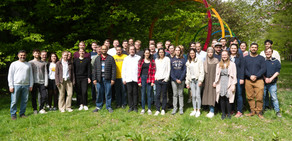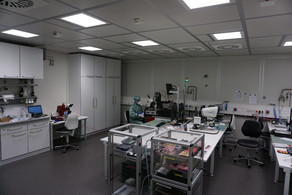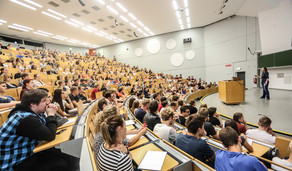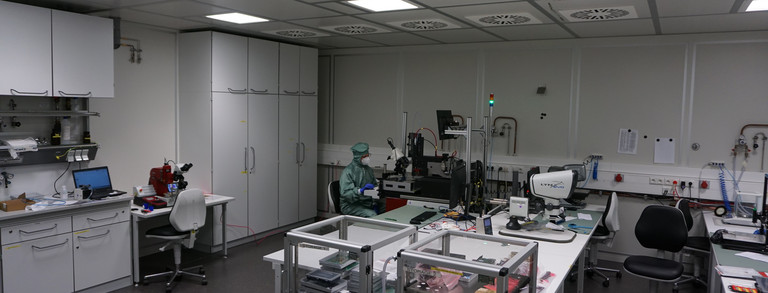Publikationen
2024
| C. M. Bäcker et al. | Titanium Implants for Field Verification in Proton Therapy – an Applicability Test | 2022 IEEE Nuclear Science Symposium and Medical Imaging Conference (NSS/MIC) |
2023
| T. Rodríguez-González et al. | Production of 11C, 13N and 15O in proton-induced nuclear reactions up to 200 MeV | Nuclear Data Sheets 187 (2023) 576 |
2022
| I. Schilling et al. | Measuring the Beam Energy in Proton Therapy Facilities Using ATLAS IBL Pixel Detectors | Instruments 4 (2022) 80 |
| I. Schilling et al. | Characterization of pixelated silicon detectors for daily quality assurance measurements in proton therapy | Journal of Physics: Conference Series 2374 (2022) 012178 [arXiv:2204.02060] |
| F. Heinzelmann et al. | Evaluation of a New Inverse, Globally Convex Treatment Planning System Algorithm for Gamma Knife Radiation Surgery Within a Prospective Trial: Advantages and Disadvantages in Practical Application | Advances in Radiation Oncology 6 (2022) 101006 |
| C. Behrends et al. | The radiosensitizing effect of platinum nanoparticles in proton irradiations is not caused by an enhanced proton energy deposition at the macroscopic scale | Phys. Med. Biol. |
| M. T. Rodriguez Gonzales et al. | Preliminary results of the experimental cross sections of the long-lived β+ emitters of interest in PET range verification in proton therapy at clinical energies | EPJ Web of Conferences 261 (2022) 05007 |
2021
| S. Zwiehoff et al. | Enhancement of Proton Therapy Efficiency by Noble Metal Nanoparticles Is Driven by the Number and Chemical Activity of Surface Atoms | Small Structures 2021 Dec 17:e2106383 |
| C. Bäumer et al. | Can a ToF-PET photon attenuation reconstruction test stopping-power estimations in proton therapy? A phantom study | Phys. Med. Biol. 66 215010 |
| C. M. Bäcker et al. | Experimental consolidation and absolute measurement of the natC(p,x)11C nuclear activation cross section at 100 MeV for particle therapy physics | Eur. Phys. J. A 57 (2021) 248 |
| C. Bäumer et al. | Clinical implementation of proton therapy using pencil-beam scanning delivery combined with static apertures | Front. Oncol. 11 (2021) 599018 |
| A. Kern et al. | Impact of air gap, range shifter and delivery technique on skin dose in proton therapy | Med. Phys. 48 (2021) 831 |
| S. España et al. | Direct proton range verification using oxygen-18 enriched water as a contrast agent | Radiat. Phys. Chem. 182 (2021) 109385 |
| C. M. Bäcker et al. | Towards using secondary gamma-rays from proton-induced radioactivation of titanium implants for off-line field verification | Nucl. Instrum. Meth. B 492 (2021) 56 |
2020
| C. M. Bäcker et al. | Evaluation of the activation of brass apertures in proton therapy using gamma-ray spectrometry and Monte Carlo simulations | J. Radiol. Prot. 40 (2020) 848 |
| C. M. Bäcker et al. | Proton Beam Range Verification with Secondary Radiation from Titanium Implants | 2019 IEEE Nuclear Science Symposium and Medical Imaging Conference (NSS/MIC) |
| C. Weber et al. | Small field output correction factors of the microSilicon detector and a deeper understanding of their origin by quantifying perturbation factors | Medical Physics 47 (2020) 3165 |
| A. Kern et al. | Determination of surface dose in pencil beam scanning proton therapy | Medical Physics 47 (2020) 2277 |
2019
| L. Heck et al. | Contrast-enhanced spectral mammography with a compact synchrotron source | PLoS ONE 14 (2019) 10: e0222816 |
| C. M. Bäcker et al. | Measurement of nuclear activation cross sections of protons on natural carbon for proton beam energies between 100 and 220 MeV | Nucl. Instrum. Meth. B 454 (2019) 50 |
2018
| C. Bäumer et al. | Measurement of absolute activation cross sections from carbon and aluminum for proton therapy | Nucl. Instrum. Meth. B 440 (2019) 75 |





